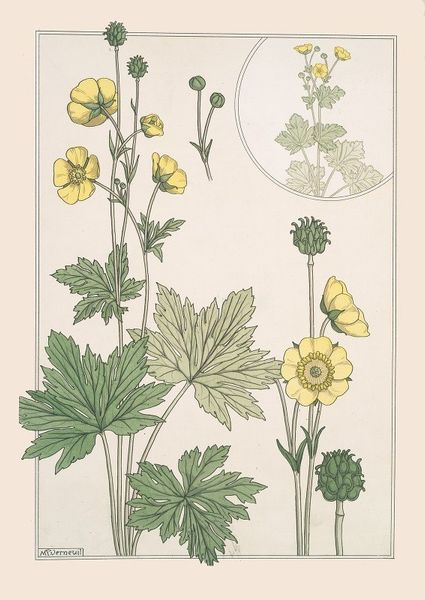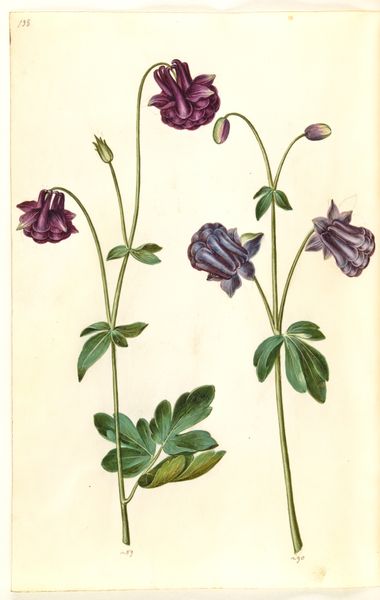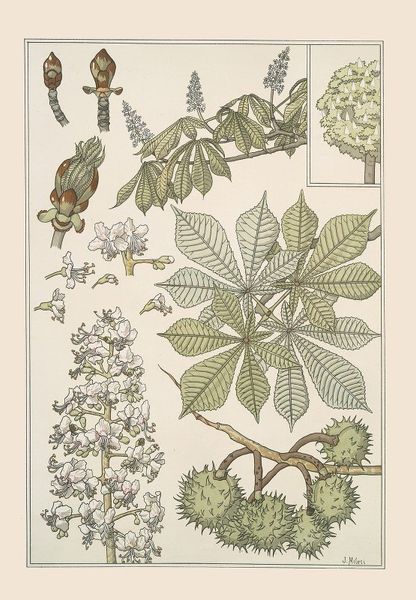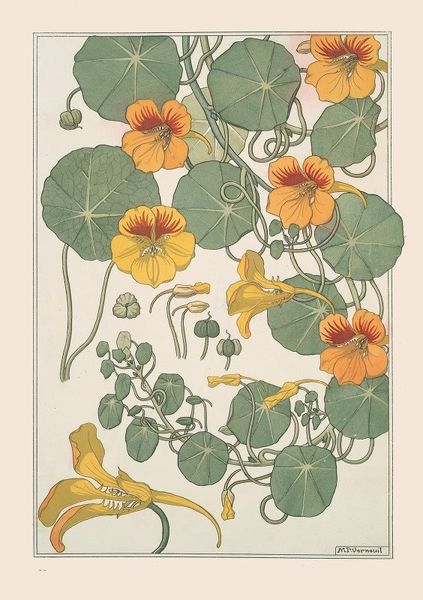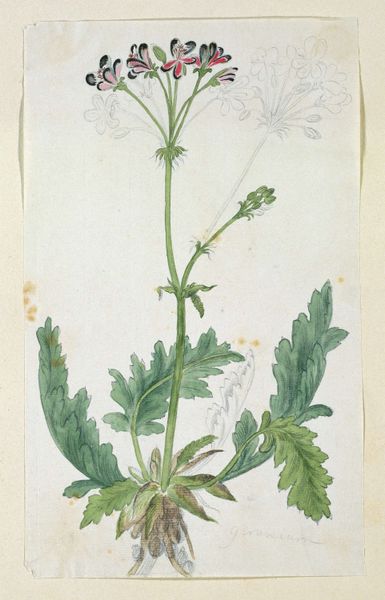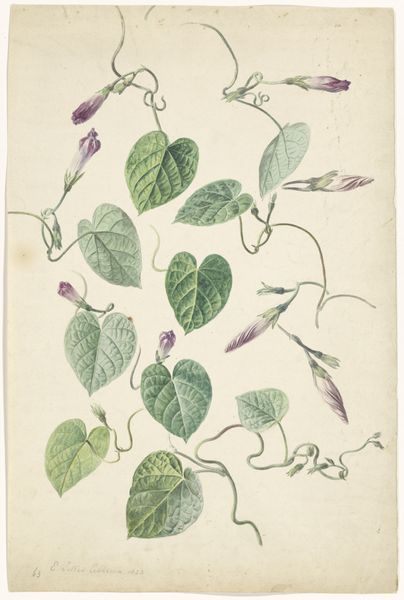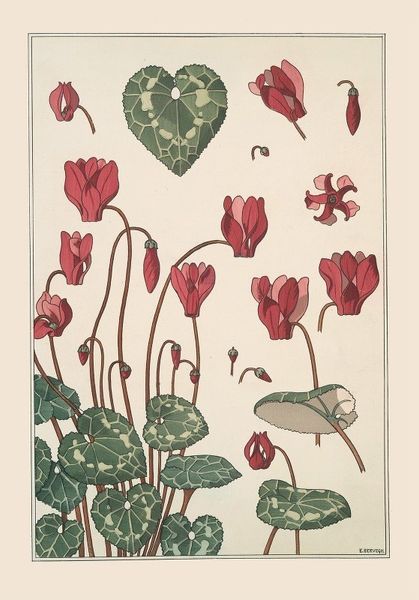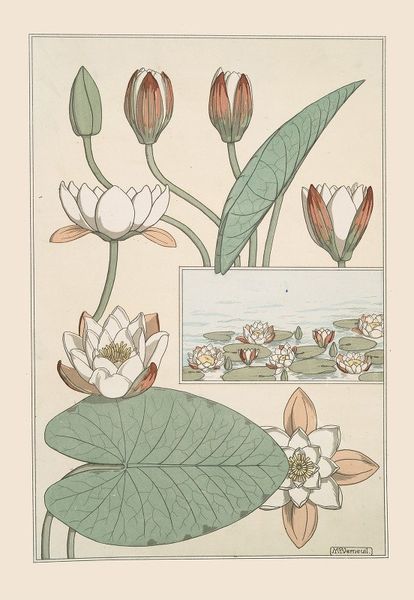
graphic-art, print, linocut
#
graphic-art
#
art-nouveau
# print
#
linocut
#
linocut print
#
textile design
#
decorative-art
Copyright: Public Domain: Artvee
Curator: This is "Courge," a linocut print made around 1896 by Maurice Pillard Verneuil. Editor: My immediate impression is the meticulous draftsmanship, all those intricate, looping tendrils! There’s almost a mathematical elegance here, which feels quite typical of Art Nouveau. Curator: Absolutely. And situating Verneuil within that movement is key. Art Nouveau, as a decorative art style, often sought to elevate everyday objects by bringing craft to the forefront. Here, we have a commonplace gourd, meticulously rendered in print. Think about the social context – the burgeoning middle class, access to mass production... this piece flirts with accessibility. Editor: It’s interesting you say “accessibility.” Linocut prints allowed for the wider dissemination of images. But let’s consider the materiality of this particular print. Verneuil’s decision to work with linoleum, rather than a more traditional woodblock, suggests a deliberate choice. Linoleum being a cheaper, more easily worked material allowed for greater experimentation. Curator: I agree completely. The accessibility of the medium allowed artists to reflect shifting social values regarding art. And further, to experiment with a material culture undergoing transformation! Think of the textile designs that incorporated these plant motifs. Women designers, many previously excluded from canonical art circles, began gaining recognition via textiles that borrowed and reinterpreted images such as the plants displayed here, subtly subverting traditional patriarchal constructs of the natural world. Editor: I see your point about re-interpretations in textile. Still, linoleum manufacture involved particular forms of labor – often under harsh conditions. What looks decorative was often made via considerable worker exploitation. The means of production really impacts the message of these domestic and familiar subjects. Curator: A powerful and essential point! Reflecting on it that way, this art evokes tensions—between the artistry on display and the material reality of production that shapes our access to and consumption of art. Editor: Ultimately, grappling with these tensions reveals how "Courge" resonates in the larger historical and social frameworks governing artistic practice. Curator: Yes, precisely—the social milieu framing it brings the object to life.
Comments
No comments
Be the first to comment and join the conversation on the ultimate creative platform.
